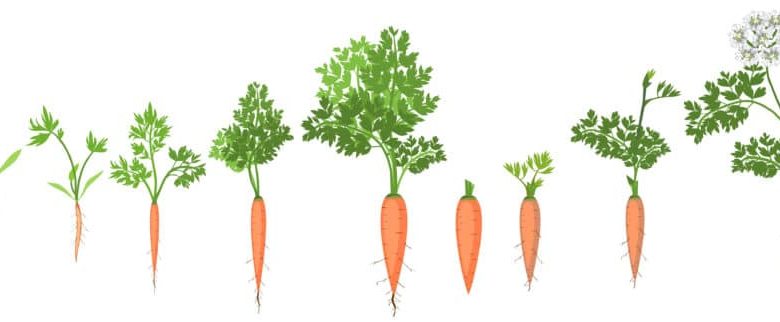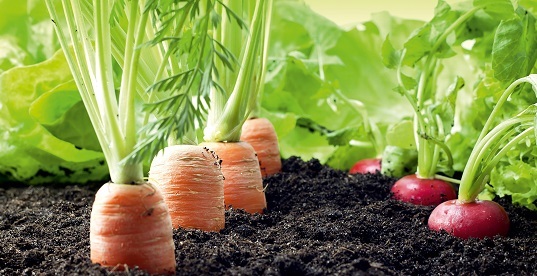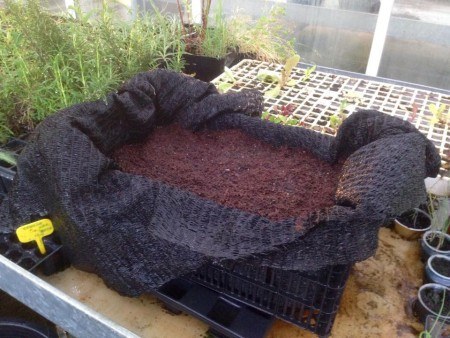How to grow Carrots step by step: Planting, harvesting and others

Very good to all agrohuerters. Today I come to tell you about the different techniques that I have observed to grow carrots, both in the garden and at home, it is very easy and comfortable, ideal for those of you who are just starting out.

history of carrots
First of all, I wanted to tell you that carrots (Daucus Carota) are a species of the Apiaceae (Umbelliferae) family, originally from central Asia, Afghanistan, etc…
The funny thing about this is that carrots weren’t originally orange!
They were white, purple, yellow, etc… Since the time of the Romans they were already consumed and it was the Dutch who took care of giving them this orange tone that remains after cooking. This orange color is due to the fact that they have a higher amount of carotenoids (when ingested they are transformed into vitamin A), probably the Dutch were selecting carrots that expressed orange color over the years because it is one of their favorite colors, without worrying about carotene although the reason for that selection is not really known exactly.
As always, agricultural marketing is looking for new varieties to introduce in the markets, new colors that attract the attention of consumers, etc… So be vigilant because soon these colored carrots will appear again in your lives.
How to grow carrots
Growing carrots requires some very basic prior advice:
1. Rocky or heavy soils are not recommended for growing carrots. The substrate must be rich in organic matter and very loose, fine. The carrot is a thickened root, so it will grow deep, the less impediments the soil puts, the deeper and more perfect the root will grow.
2. It is a biannual crop, you can grow carrots practically all year round because they withstand low temperatures well as they grow inside the soil, it is a good crop for autumn and winter.

If you grow them at home, think that the container has to be deep enough for the crop to develop, with about 30 cm it will be more than enough.
plant carrots
When sowing them, another couple of tips:
Do not make a previous seedbed. To grow carrots it is not recommended at all, I have done it and I regret it, basically carrots will germinate well if the soil is suitable, making a seedbed implies transplanting the root balls later, this transplant can be bad for growing carrots, since the root can lose its initial guide or run into a different soil and grow worse.
Carry out direct seeding. To grow carrots, sow them directly in the previously prepared soil, they are very small seeds that you can sow both directly and soak them in water beforehand to facilitate their germination. The sowing is almost always broadcast, if many germinate you can always do a thinning although if you want to be more select and sow them one by one it’s up to you…
Another way of planting carrots, very useful both at home and in the garden, is to plant them in a fruit box. This idea has caused a sensation among market gardeners since it allows carrots to be grown easily, without much effort and without having land, with a couple of boxes of fruit is enough.
Basically, to grow carrots in boxes, you place one box on top of the other, cover the first with a sackcloth or other material that allows water to pass through and facilitates drainage of the box to avoid possible rotting problems. Next you add a good substrate, loose, rich in organic matter and you sow your carrots by broadcast, you will see that you immediately obtain very good results.

Care and harvest of carrots
Depending on the variety you have planted and the time of year, it will take 6 to 12 weeks to harvest your carrots.
Surely the tip of the carrot sticks out a little above the ground and you can see how they go depending on the diameter it presents. To collect them you just have to pull them and wash them well before eating them.
As for pests and diseases in carrot cultivation, you can come across the mythical aphids and the carrot fly (Psylla rosae). The larvae of these flies are root miners so they can completely ruin the crop.
The most economical and ecological way to prevent it is through cultural practices, basically trying to acquire disinfected carrot seeds and substrates, Chinese lands are not usually disinfected for example, this way you will prevent the land from being contaminated by the eggs of this fly.
Little more, I hope as always that you dare to grow carrots even in a fruit crate, it will take up little space and you will have results very soon.
All the best

![Photo of Tarragon: [Characteristics, Care, Planting, Pruning and Problems]](https://www.complete-gardening.com/wp-content/uploads/2022/08/tarragon-characteristics-care-planting-pruning-and-problems-390x220.jpg)

